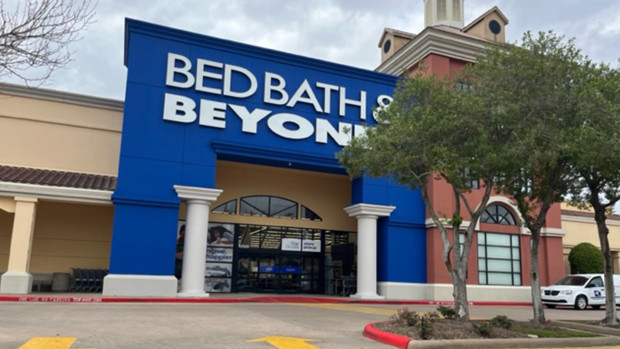
Target (TGT) -) and Walmart (WMT) -) have proven that retail can survive despite the rivals' ongoing retail war with Amazon (AMZN) -). Kohl’s was facing a buyout last year and has made some strides toward recovery over the last 12 months, since pulling out of a buyout agreement.
Sears struggled for years, as it suffered, like Kohl’s (KSS) -), in not reinventing itself to keep it relevant, and after more than a century in operations, filed bankruptcy and liquidated almost all of its stores. As of mid June, 17 Sears stores remain in the US, according to data company ScrapeHero.
Now another retail giant that seemed to have a great niche in the market, has failed. Bed Bath and Beyond filed for bankruptcy and began selling off assets.
Being the most recent major retailer filing for bankruptcy, online retailer Overstock.com (OSTK) -) paid $21.5 million for the intellectual property of Bed Bath and Beyond. Still on the market is some of the retail locations that were previously Bed Bath and Beyond store locations. These retail spots are generally in high traffic shopping centers. Burlington Stores, Michael’s and Haverty have reportedly taken over Bed Bath and Beyond’s retail leases.

Image source: TheStreet
Hopes Shattered as No One Purchases Buy Buy Baby
Bed Bath and Beyond’s subsidiary Buy Buy Baby looks like it will suffer the same fate as its parent company. It was thought that the baby brand might survive as there were reportedly two potential buyers, one being Babylist, a baby registry website and one unnamed potential buyer, CNBC said.
However, the intellectual property was sold for $15.5 million to Dream on Me, a baby products retailer based out of New Jersey. The intellectual property purchased includes the company’s brand name, sales data, websites and mobile apps.
The intellectual property of Bed Bath and Beyond and Buy Buy Baby brings in a total of $37 million, that’s still a far cry from the total debts that Bed Bath and Beyond had of roughly $5.2 billion, according to court documents.
The Bed Bath and Beyond and Buy Buy Baby brands had roughly 880 retail locations together, according to Retail Dive. Bed Bath and Beyond sold home goods and Buy Buy Baby sold baby clothing, furniture and accessories. While Bed Bath and Beyond had suffered declining sales, its Buy Buy Baby had shown profits in the single digits, but profits none the less.
The small profits reported by Buy Buy Baby were not enough to save Bed Bath and Beyond, and with no potential buyer, it will face the same demise as its parent company.
Rapid Descent of Once Retail Giants
Bed Bath and Beyond and Buy Buy Baby are now part of growing list of retailers who faced bankruptcy. Each retailer has its own special circumstances, but one of the biggest contributors to closing these retail giants is decline in mall traffic, as these retailers are usually tied to large retail centers.
Many still consider the pandemic as the straw that broke the camel's back in the retail world. More and more people switched to online shopping as retail hours were either nonexistent or slashed due to staffing. Retailers were forced to punt and try and figure out ways to get customers shopping, when no one left their homes.
Retailers that already had an online presence were able to quickly switch to curb side delivery. Restaurants were able to use delivery services like Uber Eats to bridge the gap between customers not wanting to pick up and needing staff to deliver. Retailers also took to either delivering orders themselves or using a business-like Uber to get orders to customers.
The other big downfalls of giant companies were the complacency internal to the company and external with customers that the long-lived brand names like Sears and K-mart and more were just going to continue as they were too big to fail.







